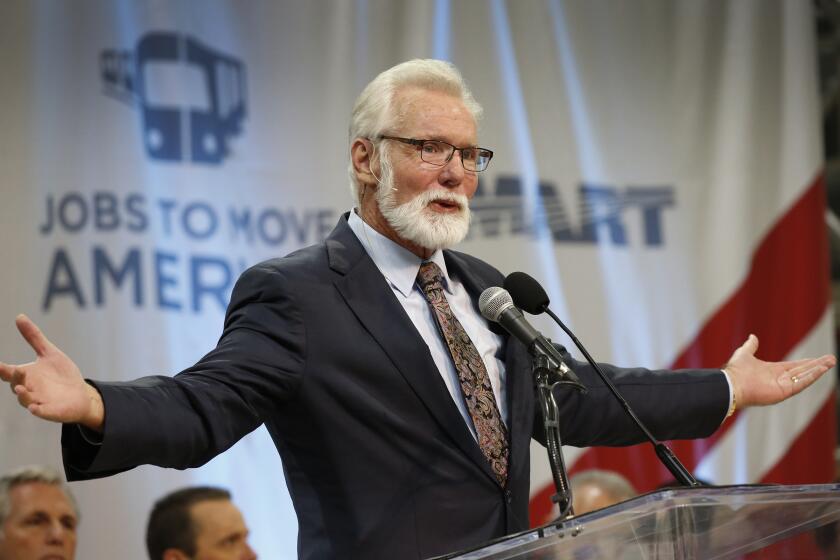Advocate shows autistic people how to have safe encounters with police
- Share via
Emily Iland spent decades advocating for her 30-year-old son, who has autism, his own apartment, a college degree and an accounting career.
Now, as part of the Autism Society of Los Angeles, Iland is trying to make sure young people like him, pushing for independence, don’t wind up as law enforcement statistics.
Since 2007, Iland has been trying to teach Los Angeles Police Department officers how to recognize and interact with people who have autism spectrum disorders. Now she’s trying to teach people with autism what to do if they are stopped by police:
Don’t run or reach into your pocket. Stay calm. Show them your hands. If you’re handcuffed or put into a patrol car, be quiet, be patient, be still. If you’re arrested, tell the officers you have a disability and ask to talk to a lawyer.
Those are the basics of Iland’s “Be Safe” campaign, which includes a DVD starring young people with autism role-playing police encounters, and a guidebook for parents, teachers and counselors.
People on the autism spectrum often have trouble socializing and communicating; they may exhibit inappropriate behavior, misread social cues or become agitated under stress. Statistics suggest that they are seven times as likely as someone without autism to be involved with law officers as a victim, witness or offender.
Iland’s sessions with the LAPD brought her face to face with a reality that her training couldn’t counter:
“The police told me something,” she said. “If someone runs, they have to chase them. If someone puts their hand in their waistband, they have to assume they are reaching for a weapon. Even if they know the person has autism, they have to respond to what they see.
“When I learned how they operate, how they think,” Iland said, “that’s when I realized we have to train our young people, not just the police.”
::
Every year, about 50,000 teenagers on the autism spectrum enter adulthood. Because of the expanding access to therapeutic services, many will have jobs, driver’s licenses, hobbies and social lives that take them into the streets.
The results can sometimes be tragic.
Four years ago, an LAPD officer shot Steven Eugene Washington to death, as the 27-year-old walked alone at night along a street in Koreatown. A pair of officers intended to question him about a noise they heard nearby. When they called out to him from their patrol car, he gave them a “hard” look and reached toward his waistband, they later said.
One officer drew his gun. Washington walked toward the car with a “blank stare,” the officers said. He ignored commands to raise his hands. The officer fired a shot that struck Washington in the head. The young man was unarmed; he had a cellphone clipped to his waistband.
The shooting drew complaints from advocates for the disabled, the ACLU, and the young man’s family and friends. The city’s civilian Police Commission found the officers’ tactics at fault, overruled LAPD Chief Charlie Beck and ordered them disciplined.
And that was in a department that is considered better than most in training officers to recognize signs of disabilities, including autism.
That case was a catalyst for Iland’s “Be Safe” movie. She couldn’t help but think that Washington might have been safe if he had put his hands in the air instead of reaching toward his phone.
::
I watched a screening of the “Be Safe” movie last week with dozens of young adults who are on the autistic spectrum and a cadre of officers from the LAPD.
The officers moved through the crowd between episodes, chatting and playing games built around safety rules. The audience cheered when they took to the stage to display their batons and stun guns.
The video is based on real cases of young people who landed in trouble because of their autism:
A 14-year-old who was arrested after he climbed on an unattended police motorcycle and fought the officer who tried to pull him off. A new driver who roared through a line of traffic officers waving cars away from a crash because she was so intent on pulling up to a fast-food restaurant. A 22-year-old who spent a night in jail after he told police who stopped him for speeding that he had been taking drugs; what he had taken were vitamins from a drugstore.
One episode featured a skateboarder being detained by police looking for a suspect in a nearby robbery. In the DVD, the encounter went off perfectly:
The young man put his hands in the air, stood stock still as police patted him down and sat quietly handcuffed on the curb while they checked his ID. “Thank you for cooperating,” an officer said after he unfastened the cuffs.
Still, it was hard to watch, one mother told me. Her son just got his driver’s license and is eager to go out on his own. “I worry about him all the time,” she said.
She hopes officers won’t misunderstand signs that could spell trouble: his tics that look like furtive movements, the blank stare that might suggest drug use and the difficulty the 21-year-old has responding to commands because his language processing is slow.
And she wants her son to understand what police are up against. “He needs to know what to expect and how his actions are being perceived by police officers,” she said. “He needs to know not to run, not to panic. I need to be able to trust him to let the officers do their job.”
Twitter: @SandyBanksLAT
More to Read
Sign up for Essential California
The most important California stories and recommendations in your inbox every morning.
You may occasionally receive promotional content from the Los Angeles Times.











